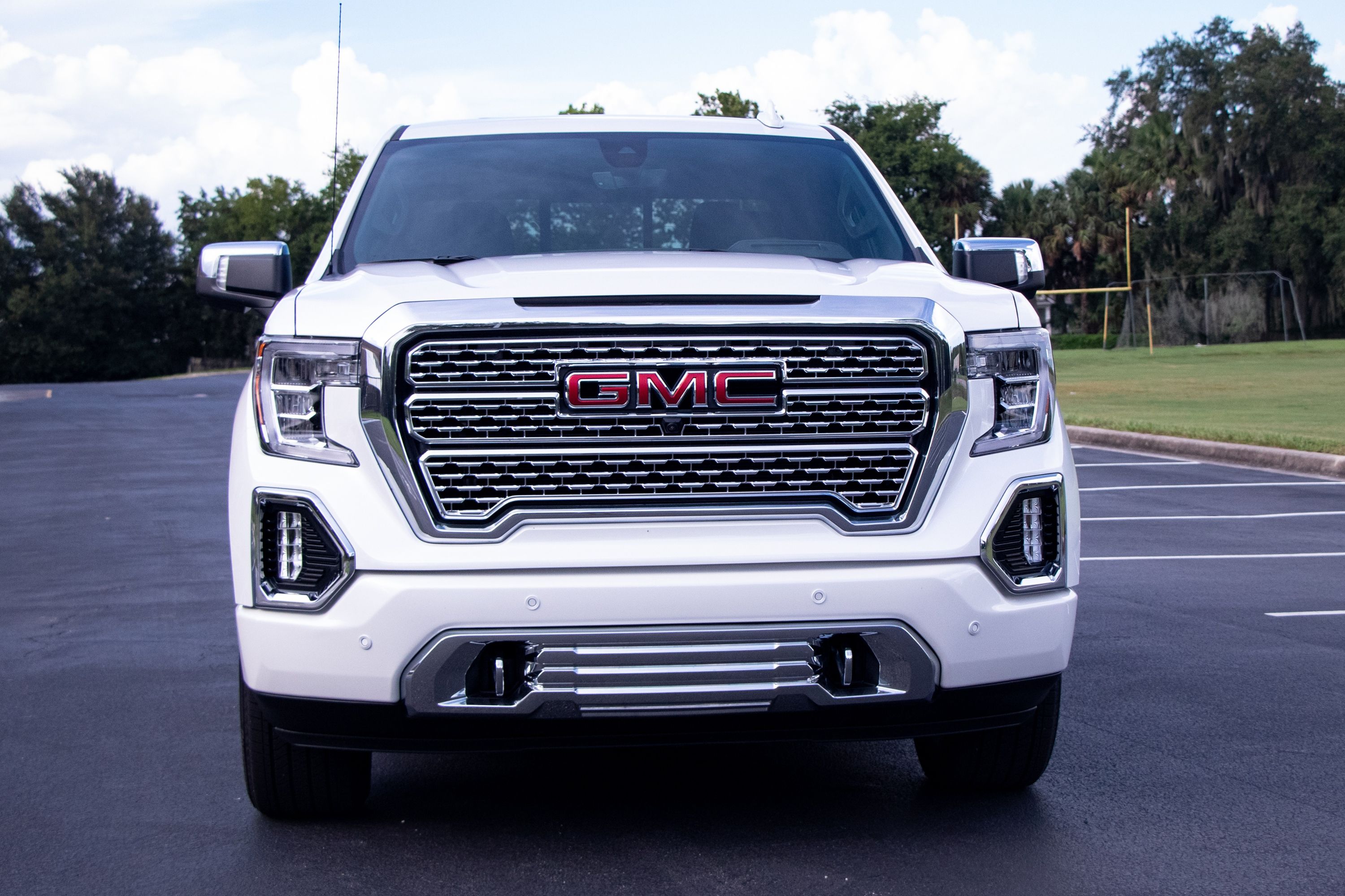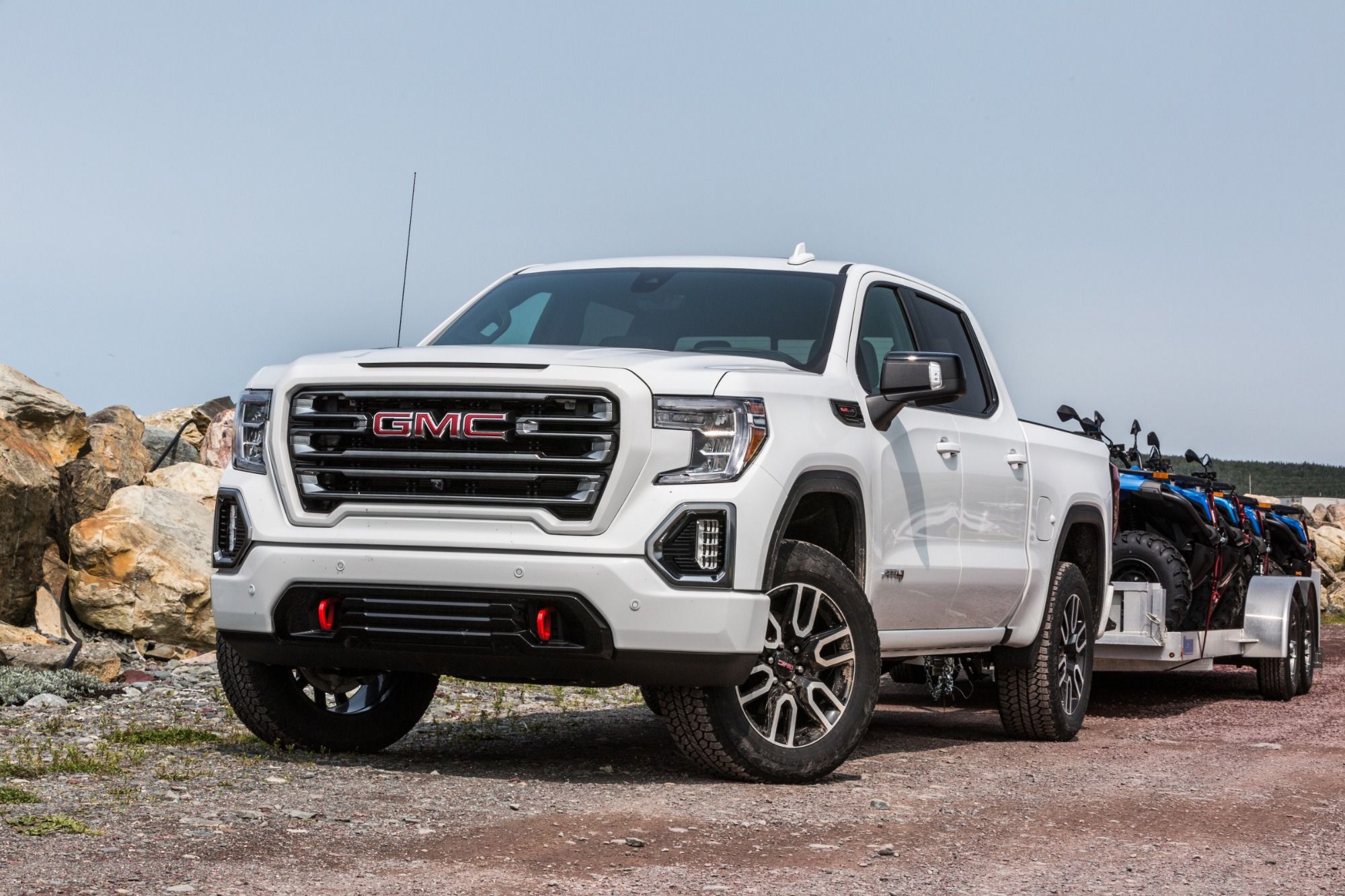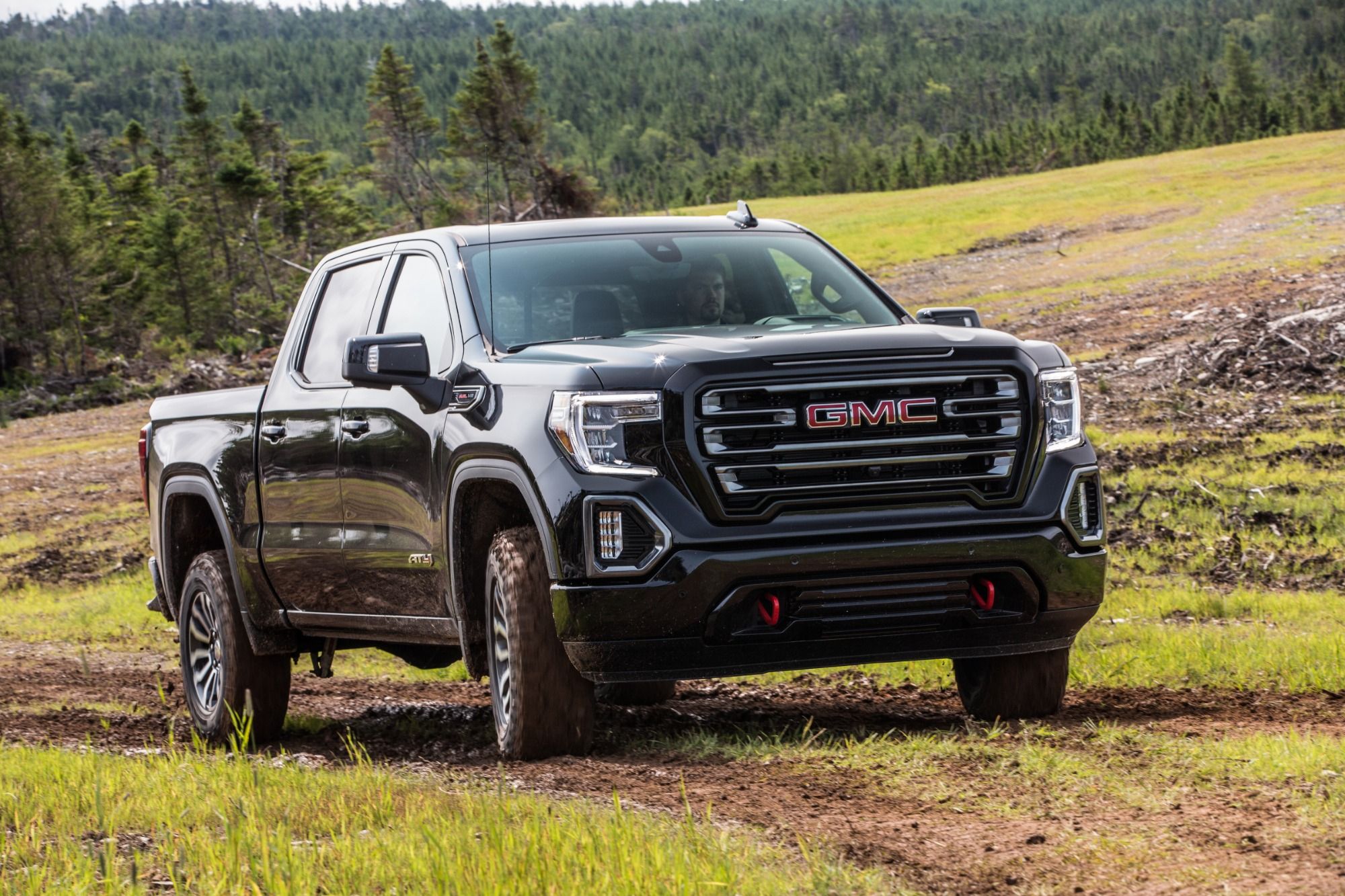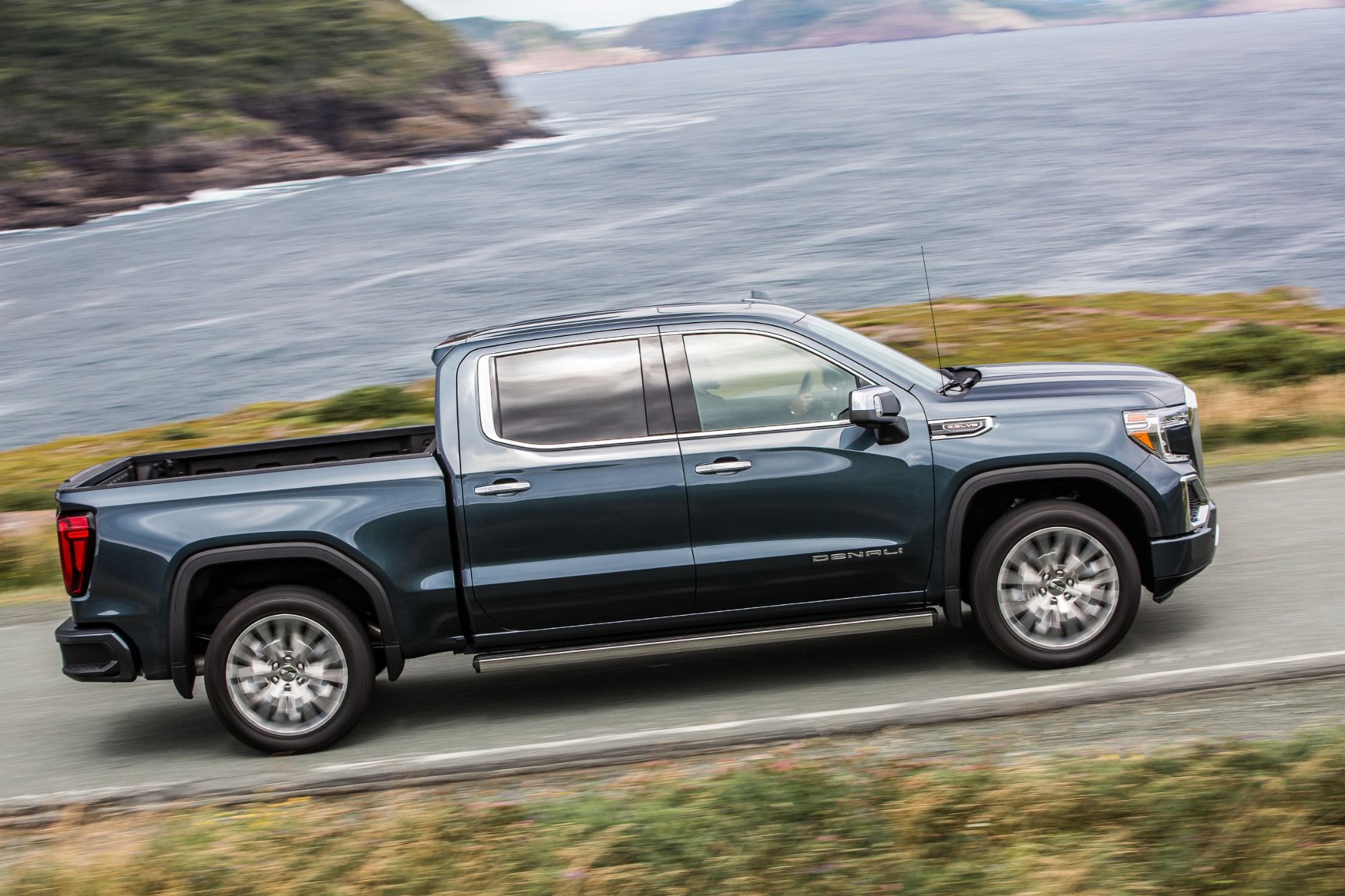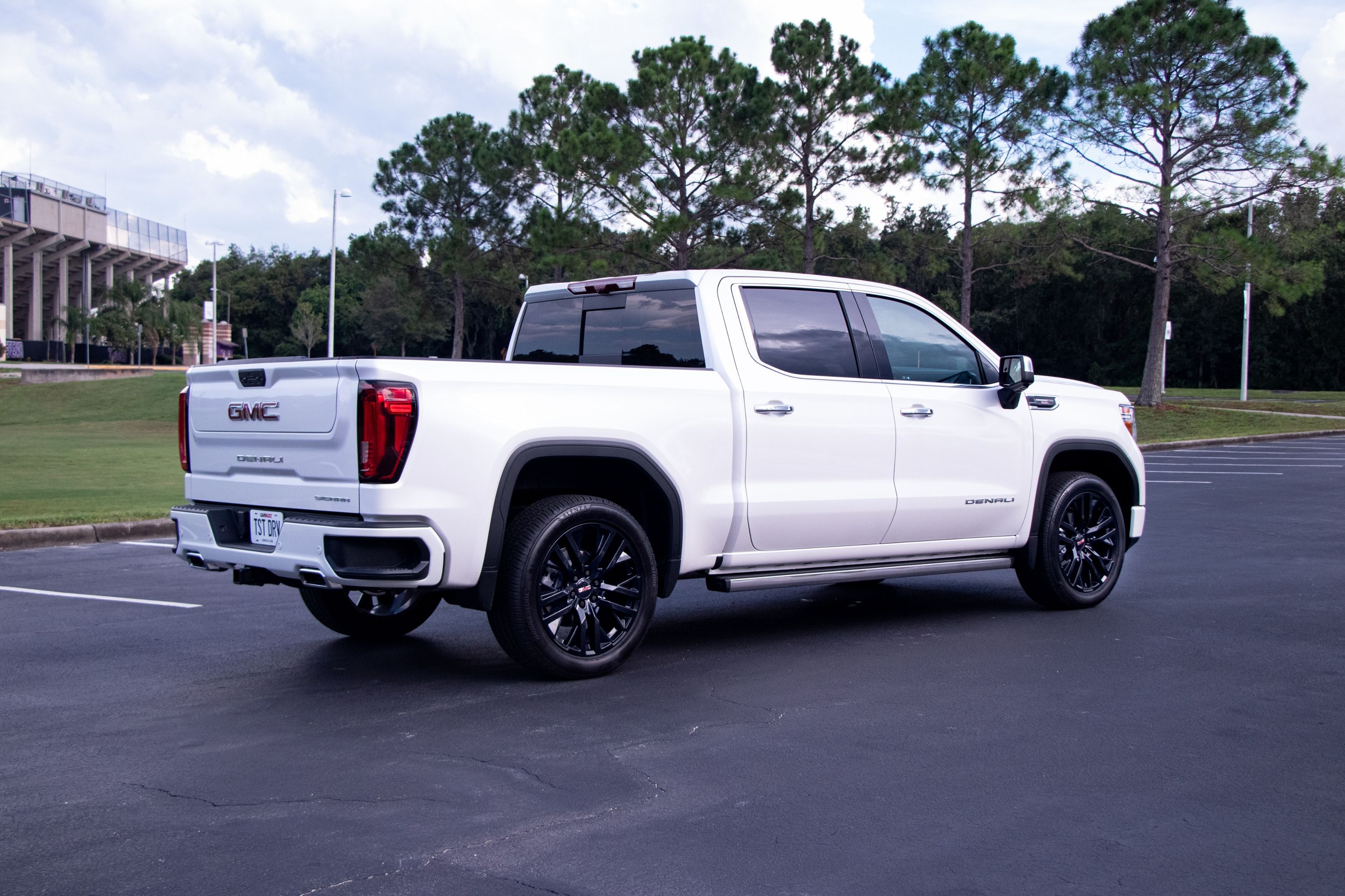
Let's get this out of the way right now: this new round of half-ton trucks from General Motors is the biggest vehicle project the company has ever undertaken. That's n terms of significance to corporate health, capital expenditures, and most importantly, engineering might.
For 2019, both the GMC Sierra and its corporate cousin the Chevrolet Silverado are switching to GM's new truck platform which brings lightness, redrawn dimensions, and more capability than ever before. That's important because pickup trucks are without a doubt one of the most important passenger vehicles to the North American economy. Think about it this way, besides being the absolute linchpins of corporate health for the Big Three automakers, there are hundreds of thousands of jobs created directly and indirectly by the production and distribution of pickup trucks, not to mention its ubiquity on construction sites, farms, and oil fields.
But for nearly 40 years GMC has worked to cultivate a different kind of client, someone who opts for a half-ton pickup truck not out of necessity per se, but because of certain life circumstances like pulling boats and campers, or driving clients to remote job sites. The 2019 GMC Sierra, especially in Denali trim, is true to the cause. This isn't some blue collar work mule, it's catering to a more sophisticated buyer who's looking for a softer cabin and more modern gadgetry compared to the apple pie scarfing Silverado.
As a result, the Sierra and the Silverado have never been more distinct, with the team at GMC striving to set the twins apart through both style and substance. On the design side, there's next to no sheet metal shared in an effort to better visually distinguish the two, and the interior color and material palettes are totally separate.
The Sierra sheds some 350 pounds thanks to a new fully boxed steel frame that's lighter and stiffer than the outgoing truck, but there's also lightweight steel sprinkled in throughout the underbelly, and aluminum in non-integral places like the hood, tailgate, and door panels. The bed, however, retains its roll-formed steel construction, unless you want the Sierra's ground-breaking CarbonPro box, with uses a new carbon-fiber polymer in place of conventional steel. GMC claims it's the most durable bed material in class.
The carbo box is wider by 6.75 inches, increasing cargo capacity to 63 cubic feet, which GMC claims makes it the most in its segment. Top trim trucks like the Sierra Denali get GMC's new MultiPro tailgate as standard kit, with the new dual-hinged gate offering owners multiple ways to use the tailgate, including variations such as the step ladder, the speaker system, and the plein-air laptop desk.
Perhaps the biggest and most welcome change to the chassis is the addition of carbon composite leaf springs which were (figuratively) yanked out of the Corvette's parts bin. The new supports for the live rear axle yield a fairly remarkable change to the typical half-ton pickup truck behavior, mitigating all but the worst of the unladen rear end hop when you hit less than ideal pavement. Part of that is attributable to the Denali's adaptive ride control, but even in AT4 models, which feature a 2-inch lift and use off-road springs with conventional dampers, the new calmness shines through.
In fact, smoothness oozes from every crevice of this truck (literally, including trick new sound-deadening "darts" mounted between the bed and the cab) but the best way to feel it is with your right foot. The standard Denali engine is the 5.3-liter V-8 paired with the tried and true eight-speed automatic, but tick the 4x4 box and you're upgraded to a lovely 420-hp 6.2-liter V8 which comes hooked to the company's new 10-speed automatic.
Both small-blocks feature GM's new Dynamic Fuel Management system which is an advancement of the company's pioneering Active Fuel Management technology. Previously, AFM would simply cut 8 cylinders down to 4 when operating under steady state conditions like highway cruising. But now, instead of switching between 8 and 4 cylinders the engine is capable of dropping as few as 1 cylinder, to as many as 7, by shutting off the oil supply to the targeted cylinders. Killing oil delivery disables the valve lifters which means there's nothing to burn in the combustion chamber. Simple.
The computer selects the firing order from a stock of 17 pre-determined fractions, with decisions made by an algorithm that crunches data like throttle angle and vehicle speed to determine how many cylinders should be in use. According to GMC, the most common permutation is a one-third fraction which means once every third cylinder the computer will instigate a combustion event. The fractions roll in order to avoid excessive cylinder wear and to keep those nasty harmonic vibrations at bay.
On paper GM says the Sierra Denali 4x4 will return 15 miles-per-gallon in the city and 21 on the highway. Out in the real world the 6.2-liter equipped Denali kicked out 19 mpg over 4 hours of mostly heavy footed highway driving around St. John's, Newfoundland, and the surrounding area. Of note, GMC gave the Sierra AT4 its own fuel economy rating of 15 city/19 highway because it has bigger tires and ditches the stock air dam. However, because GMC forecasts so few AT4s to be sold the brand didn't technically have to rate the trim level independently.
There's a new suite of adjustable driving modes including Sport, Off-Road, and Tow/Haul which are accessible via a rotary dial on the dashboard to the driver's left. Despite its outwardly aggressive appearance, the AT4's Off-Road mode is no different than the Denali's, which means it flattens out throttle response and allows for more wheel slip and higher yaw angles before stability control starts to worry you're having an accident. In reality the setting better served bombing dirt roads than it is for getting in and out of really nasty terrain.
When you jump in the cockpit, the interior retains much of its familiarity despite being significantly improved over the outgoing truck. The new infotainment system is slick and polished, with GM continuing to offer shoppers one of the best user interfaces on the market, and if you don't like what the factory offers there's also full Android Auto and Apple CarPlay capability.
As part of the trucks technology offering there's an available ProGrade Trailering system which uses strategically mounted cameras to help guide your hitch to trailer flawlessly, and offers additional aid while towing. What's coolest about the new trailering system is its additional app-based functionality. You can now test your trailer lights easily via the app, get alerted if someone's stealing your trailer, and create custom pre-tow checklists which can include items like BUY BEER.
Beneath the touchscreen lay an aircraft carrier's worth of switches that control everything from the heated seats to the Start/Stop function, if you're new to the GM ecosystem it will take you a few tries to remember where everything is. Elsewhere in the cabin, GM's Rear Camera Mirror makes an appearance, as does a multi-color head-up display system, both of which are segment firsts.
However, despite it's premium billings the Denali's cabin just isn't as nice as what Ram is offering in the upper echelons of 1500 trims. That's really not a knock on the Sierra, as there's attractive thick grain leather and legit open pore ash wood trim, but the bar was unfortunately raised right on the cusp of the Sierra's debut. GMC may be the only premium truck brand on the market, but the Sierra is no longer the only premium choice pickup buyers have.
A few final notes on the 2019 GMC Sierra: Those interested in the CarbonPro Box will have to wait until the calendar turns 2019 before those become available, same goes for shoppers interested in the new 3.0-liter diesel engine. Lastly, if you're in it for payload, you need to opt for a Crew Cab Sierra SLT equipped with the 6.2-liter, a combination that's rated to tow over 12,000 lbs compared to the Denali and AT4's 9,300 lb rating.

